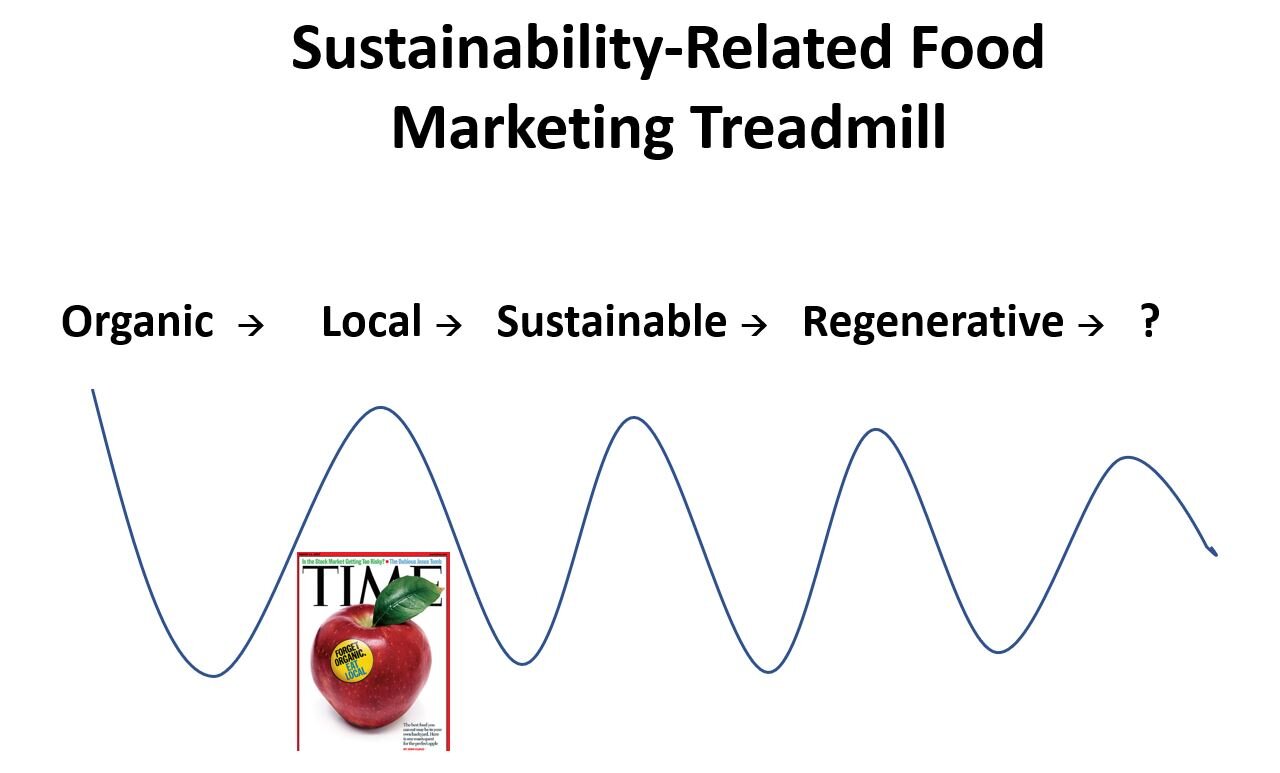That’s the title of a research paper co-authored with Vicenzina Caputo and Valarie Kilders for the Food Industry Association (FMI) Foundation. The paper came out in 2020 (based on surveys in 2019), but somehow I neglected to mention it here on the blog but was reminded of it earlier today when it was referenced.
Here is the executive summary.
The purpose of this project was to determine market potential and consumers’ beliefs, knowledge, understanding, and acceptance of gene-editing technology and gene-edited foods with the ultimate goal of providing valuable information to producers, retailers, consumers, and policy makers.
To achieve the project objectives, a nationwide consumer survey was developed. The survey was designed and programmed into an online accessible format by the director in August 2019 and administered to 4,487 U.S. food shoppers in September 2019. Different treatments were set up which varied the food product, whether the product was fresh or processed, and the information provided about gene-editing. Respondents were randomly grouped into the treatments. In each case, respondents completed simulated purchasing scenarios where they chose between products labeled to be organic, non-GMO, bioengineered, conventional, or gene-edited at varied price levels. The core findings are as follows.
· Regardless of food product, presence of processing, or information, mean willingness-to-pay for organic labels was higher than the other food labels/claims. Respondents considered organic food to be healthier, safer, and more beneficial for animal welfare, but also anticipated organic being more expensive.
· Willingness-to-pay for gene-edited products tended to be lower than that for conventional and bioengineered ones. However, willingness-to-pay significantly increased with the provision of information; particularly information about the benefits of gene-editing technology. This evidence suggests that willingness-to-pay is not much changed by merely providing respondents with information about gene-editing technology, but rather it is necessary to supplement this information with specific benefit messages if the technology is to be more widely accepted. Benefits to the environment and consumers show an overall stronger impact than benefits to the farmers.
· Consumers have a very low level of awareness and knowledge about gene-edited products when compared to the mediocre knowledge and high awareness of GMOs. About half of the respondents indicated they had never heard of gene-editing.
· Respondents completed open-ended word association tasks, which revealed fear associated with the unknown. Negatively connoted words dominated mentions in relation to “gene-editing.” Furthermore, these mentions closely resembled those given for genetically modified products.
· Despite the positive perception of the organic products, respondents mostly purchase conventionally produced food products. Even though respondents have higher willingness-to-pay for organic food, it is also higher priced. When directly asked about primary purchase motivations, respondents typically rank price and taste first, while production methods usually fell somewhere in the middle of a list of possible motivations.
· The cluster analysis resulted in three distinct risk preference segments, risk loving, risk averse, and risk neutral. A closer look at the segments by treatment reveals that when provided with basic information the share of respondents in the risk averse group increases and the risk loving group decreases. This effect reverses when information on the environmental benefits are provided.
· The willingness-to-pay for gene-editing varies across type of products and levels of processing. As for the former, consumers are willing to pay relatively more for fresh gene-edited vegetables (tomatoes and spinach) compared to fresh meat when information is provided to them. For fresh plant products, the willingness-to-pay is higher compared to their processed counterpart. On the other hand, the willingness-to-pay for gene-edited meat is higher for bacon than for pork chops.
· Despite somewhat negative opinions about gene-edited food, some consumers value having the option to buy them. When consumers are informed of the benefits of gene-editing, the market share for gene-edited products (when pitted against organic, non-GMO, conventional, and bioengineered) exceeds 15%. Consumer willingness-to-pay to have gene-edited foods available range from $0.00 to $0.23 per choice.
Results of this study reveal consumers generally think about gene-editing in a negative light. However, over half of the respondents indicate having never heard of the technology. Simply informing consumers about the technology has trivial effects on willingness-to-pay, but specific information about the benefits of gene-editing can significantly improve consumer acceptance of gene-editing.


